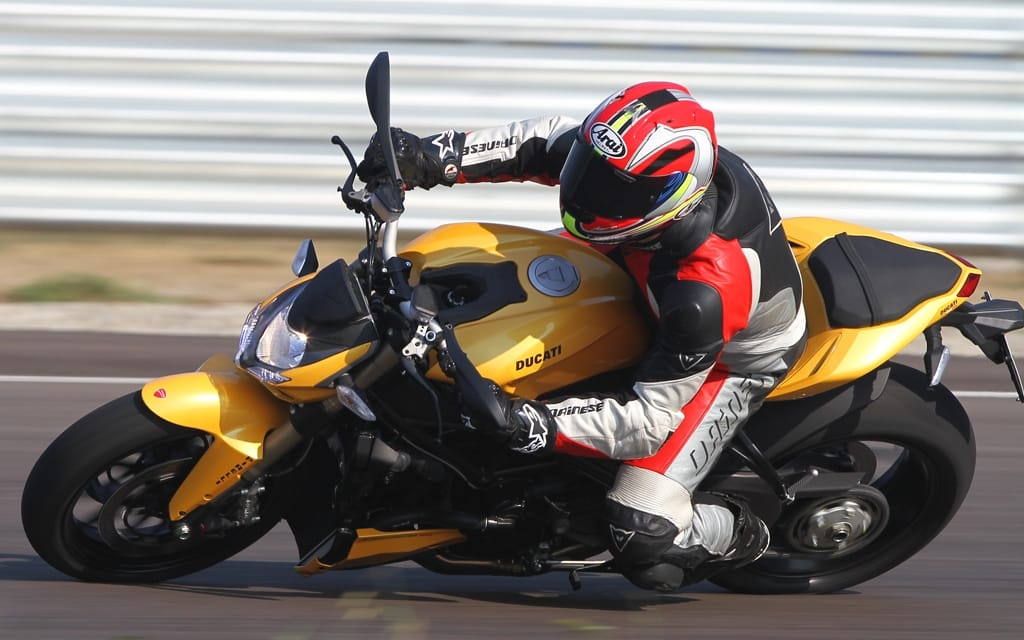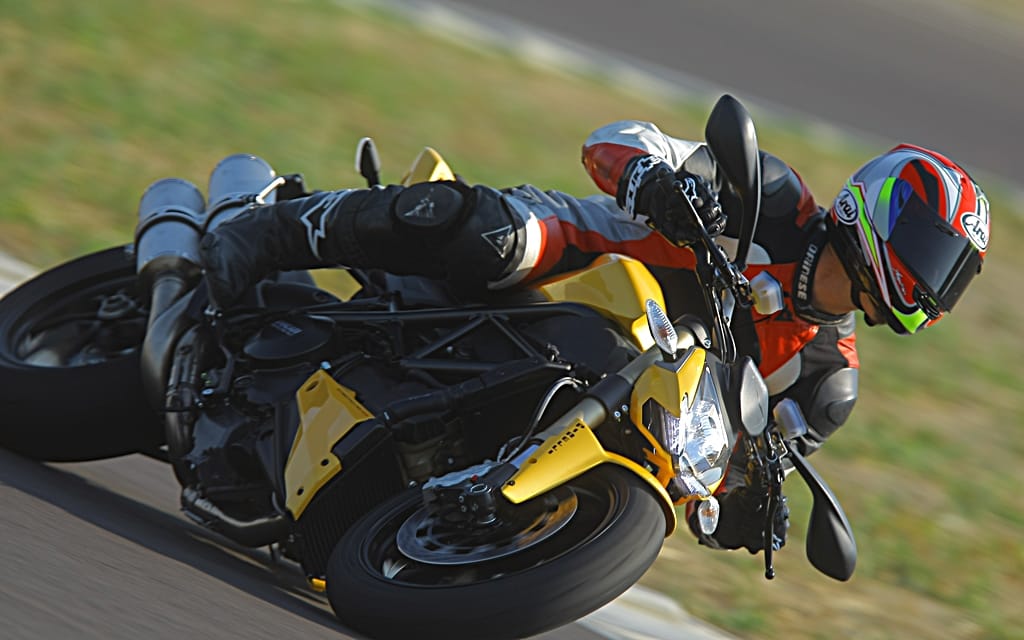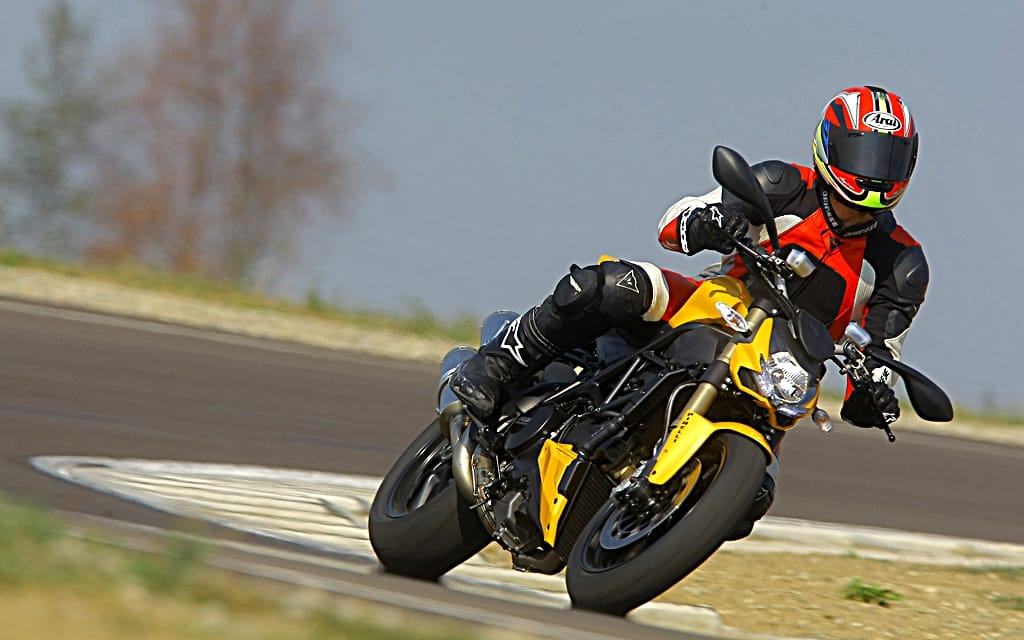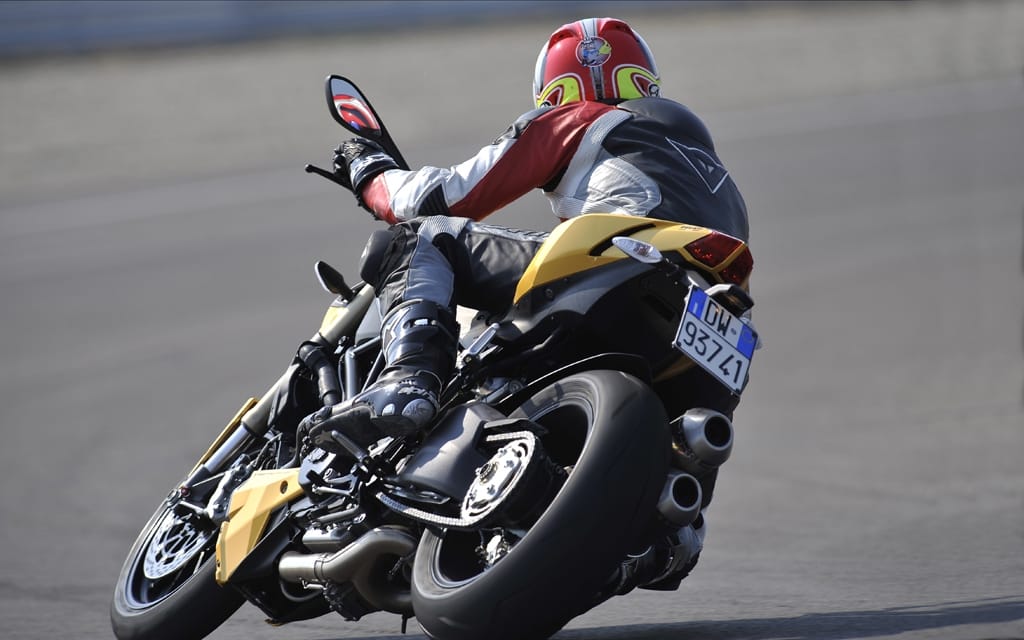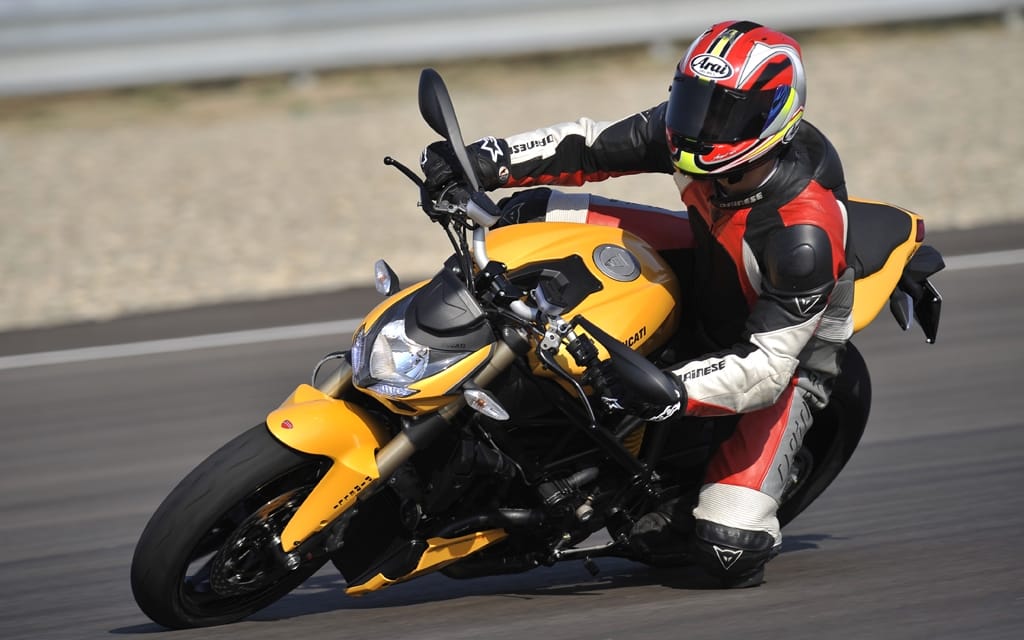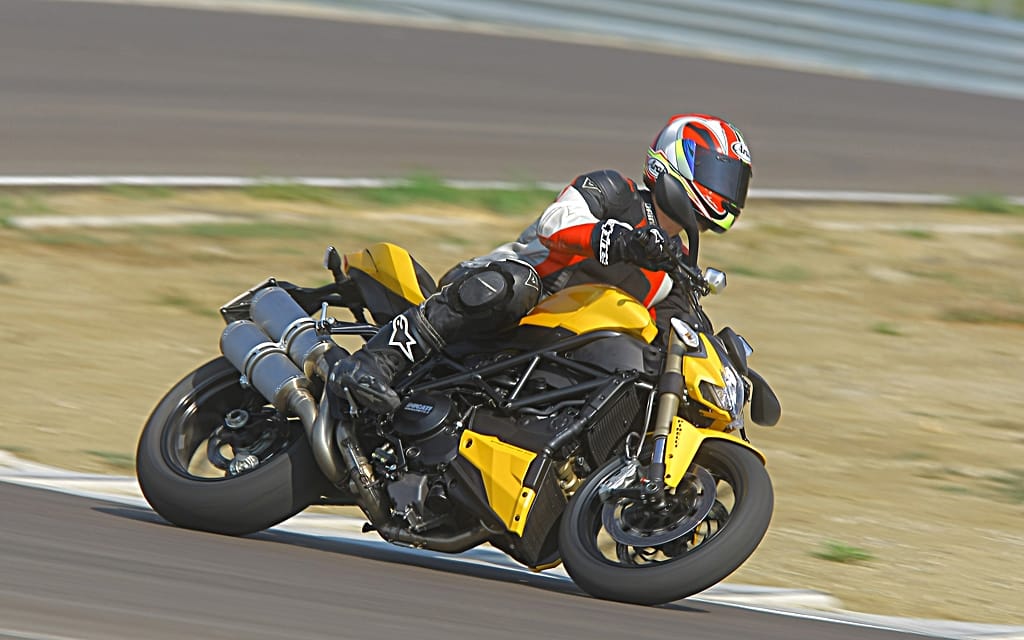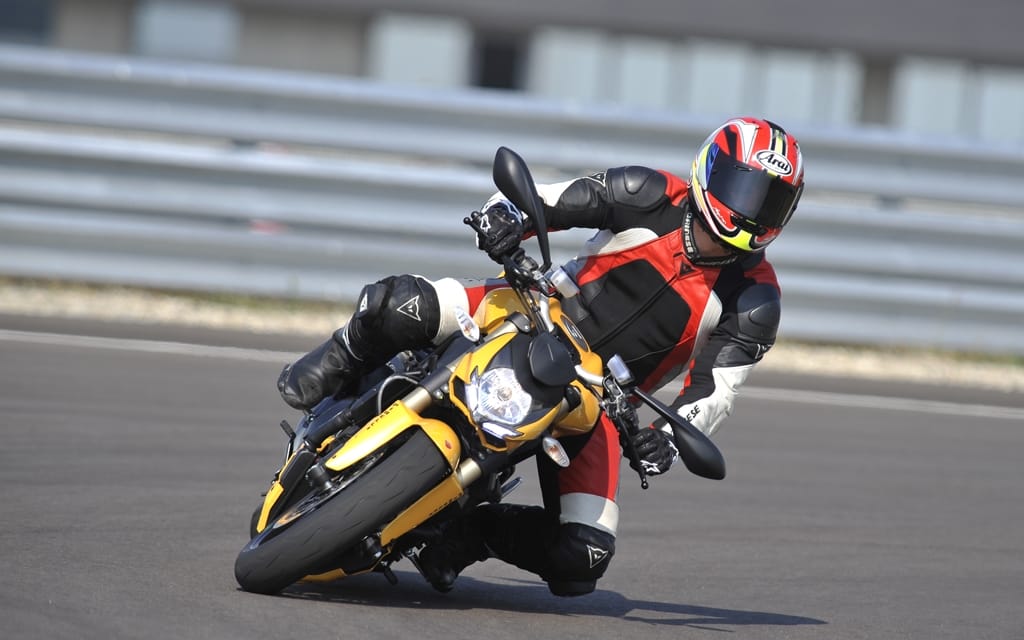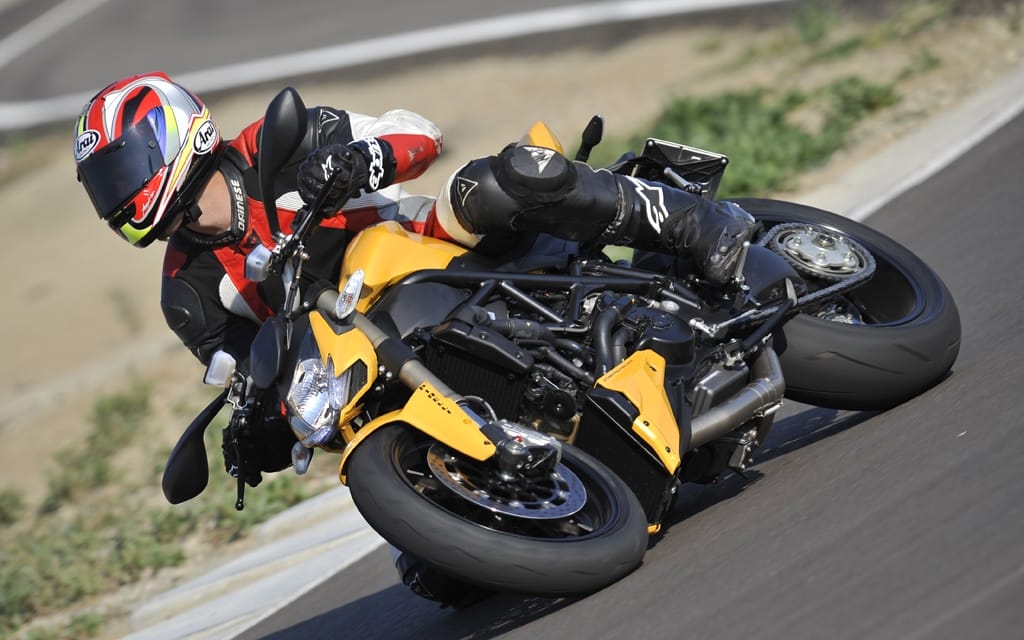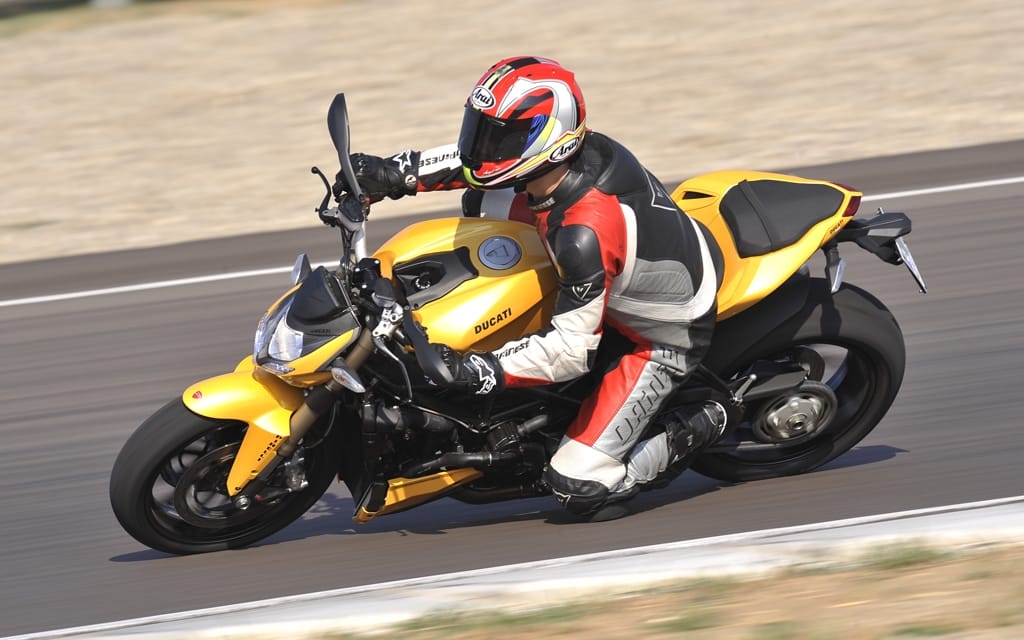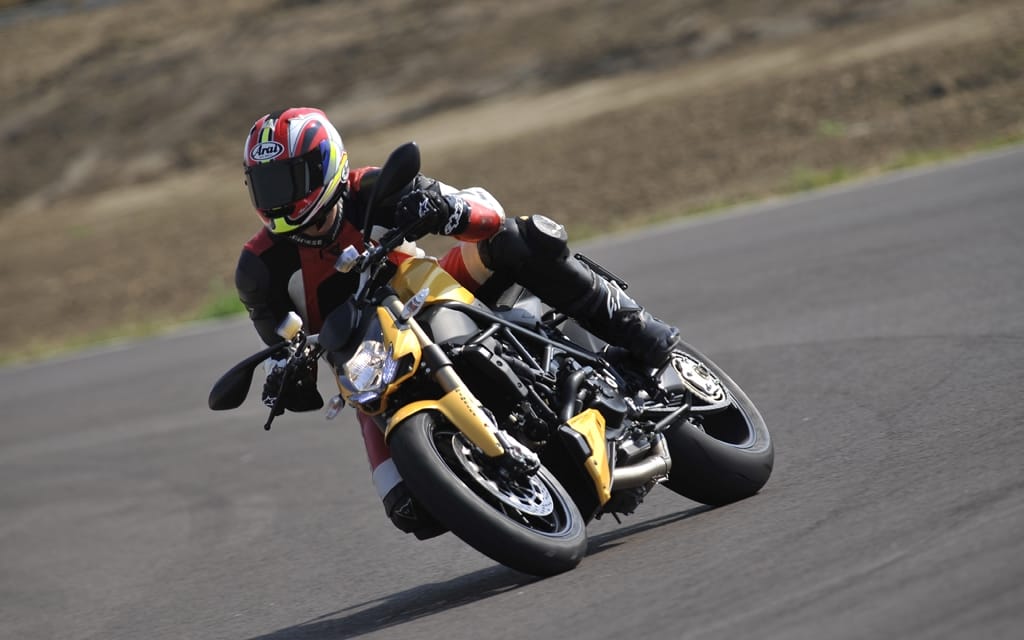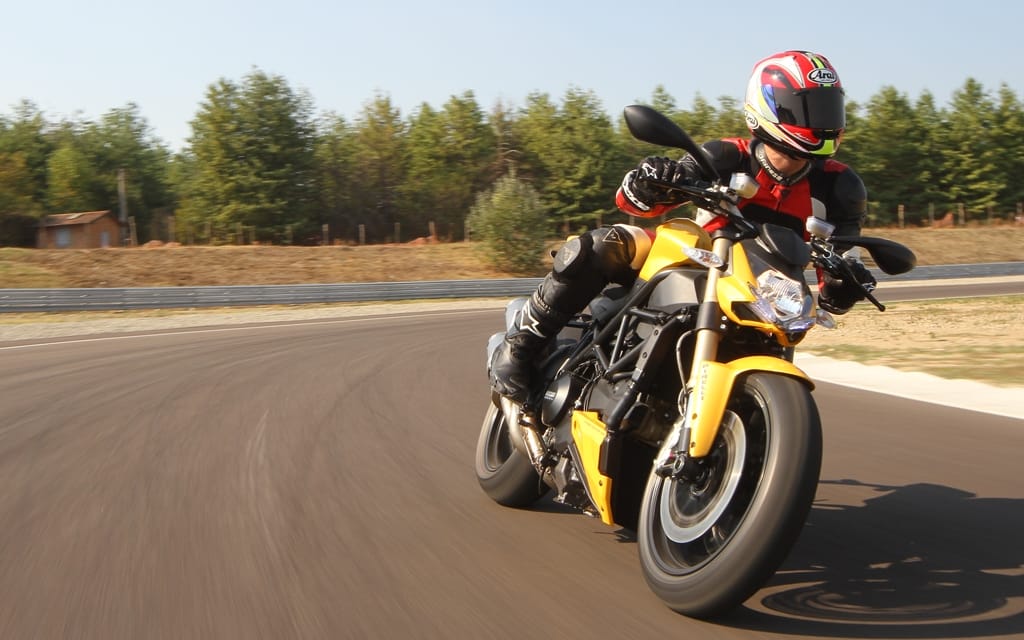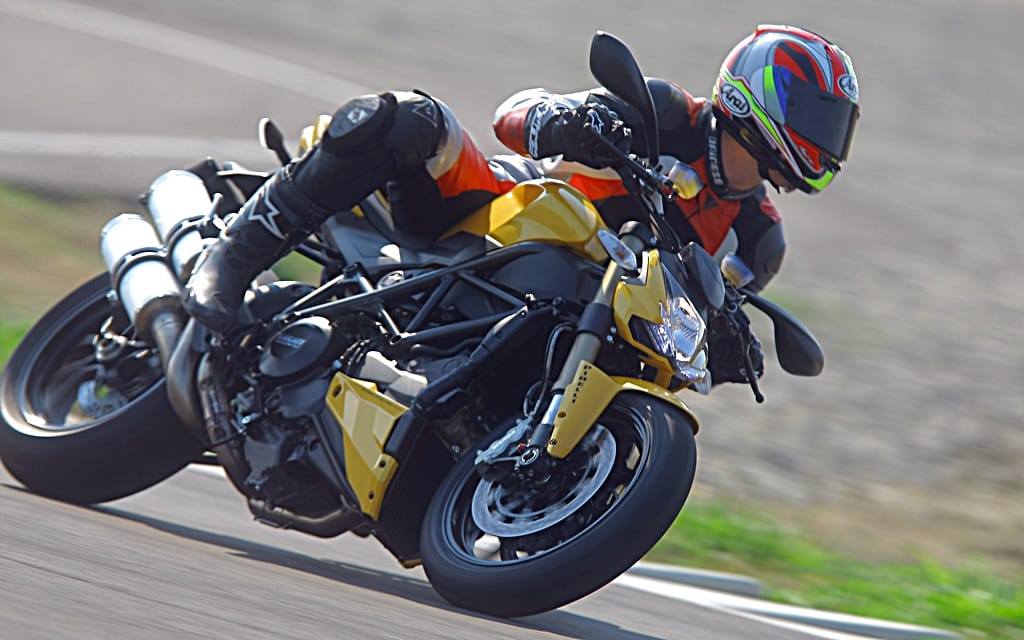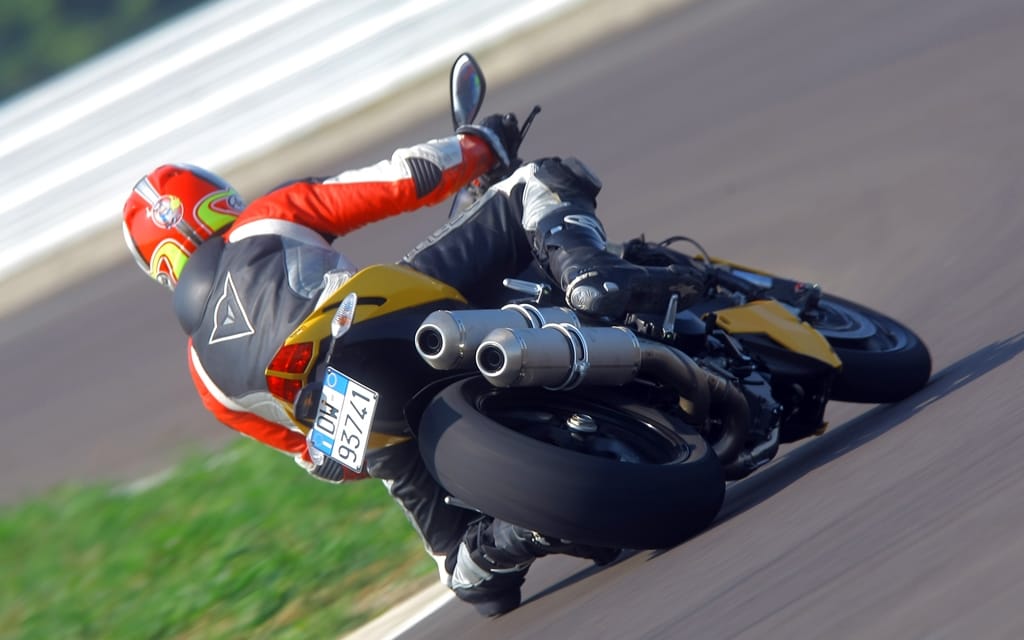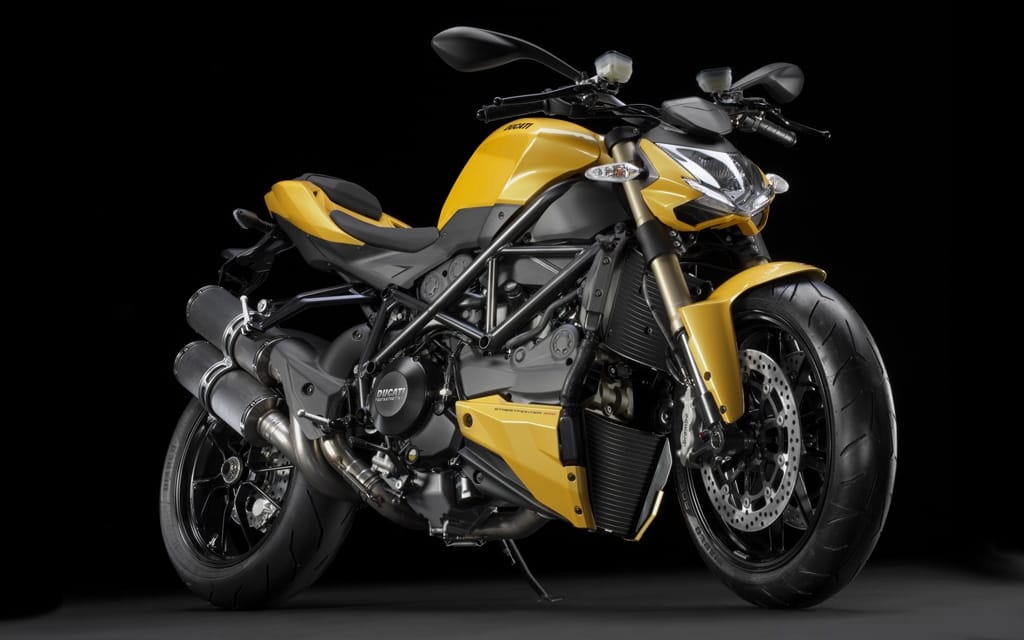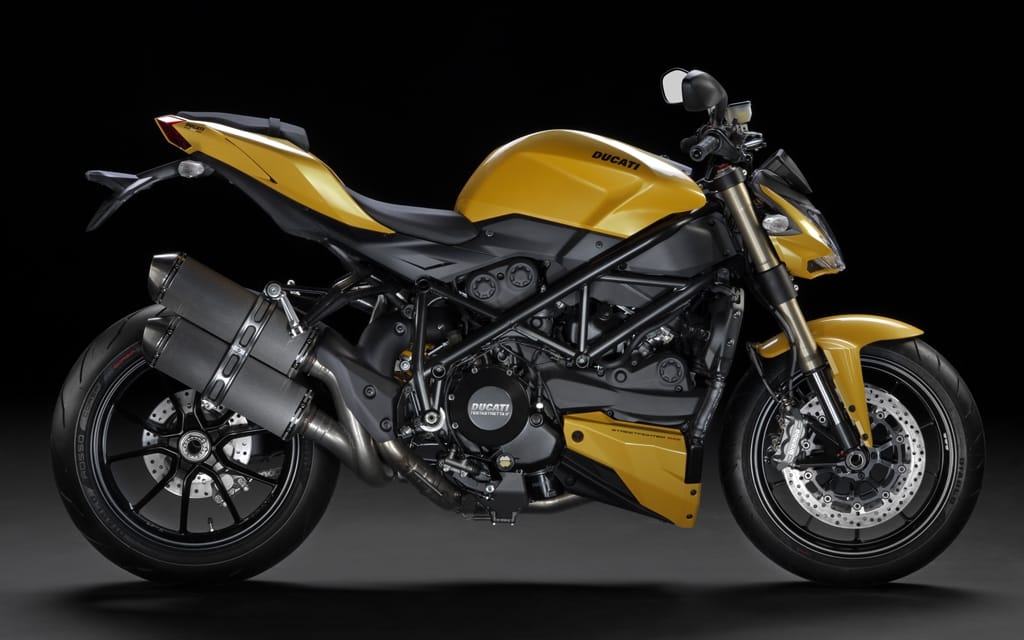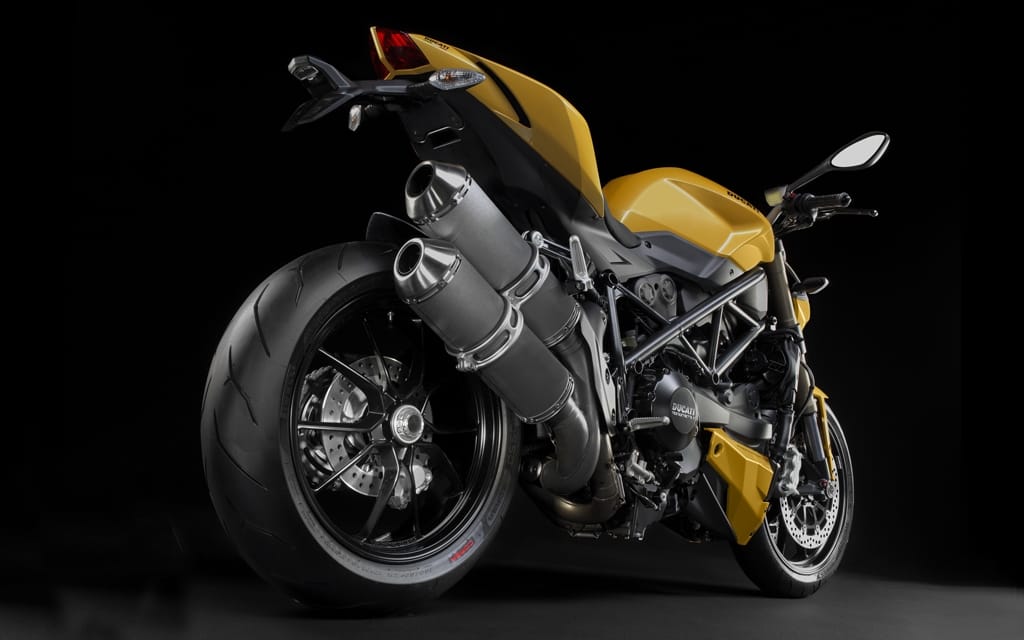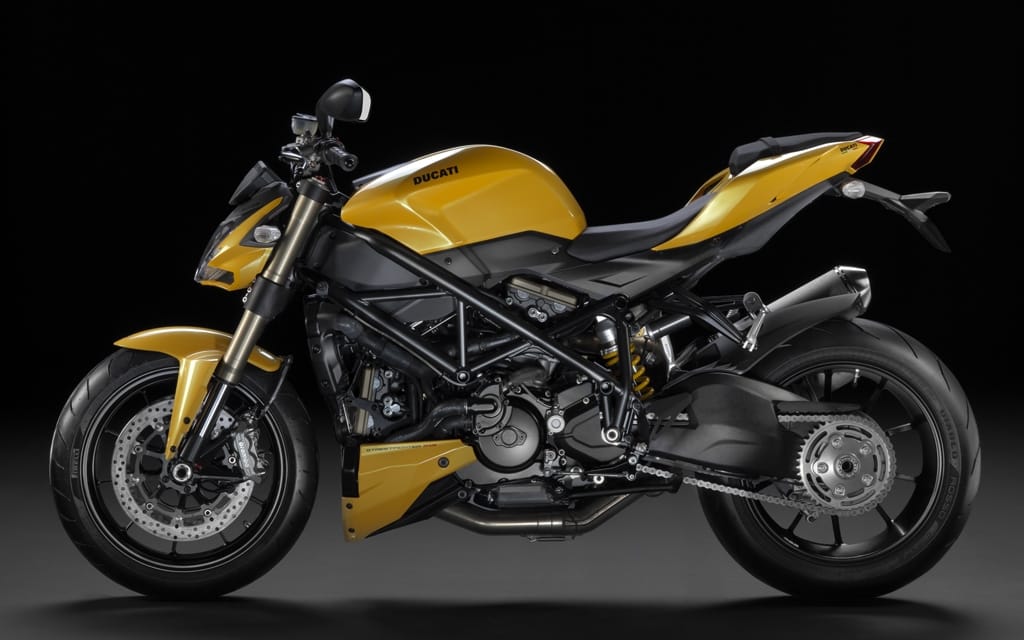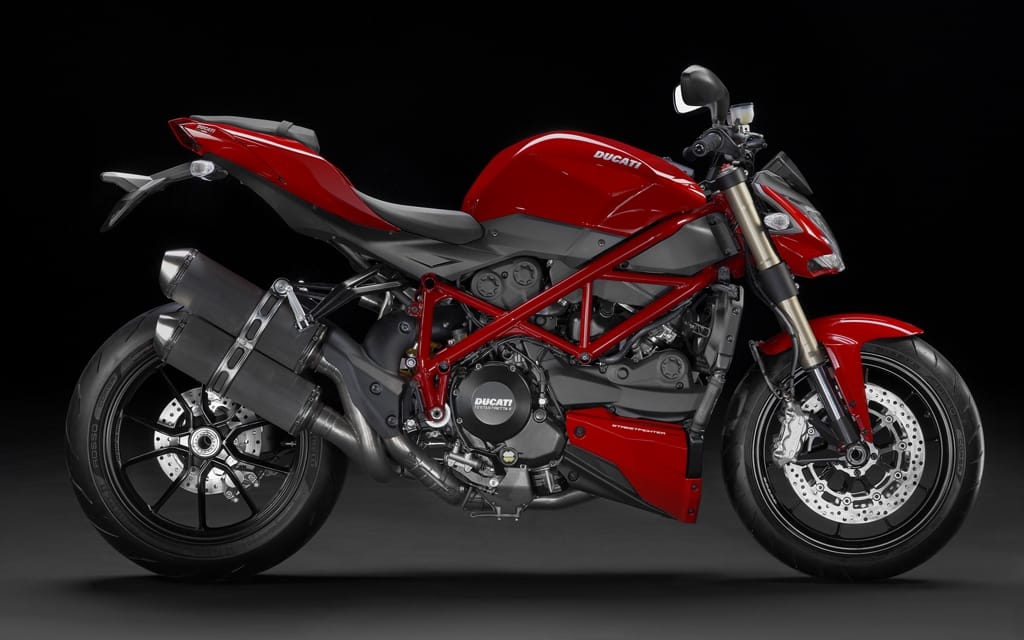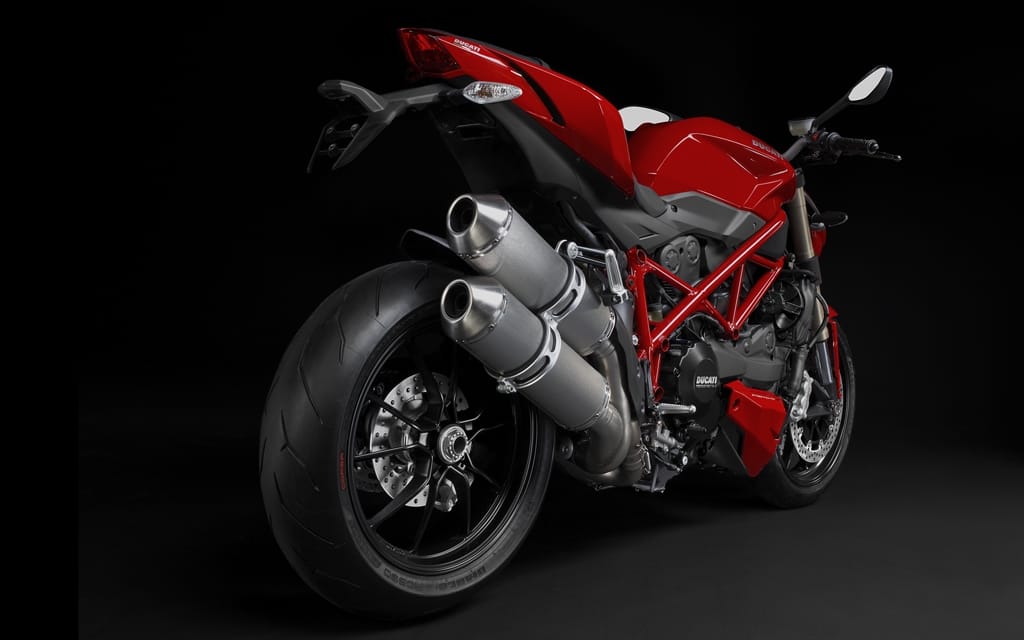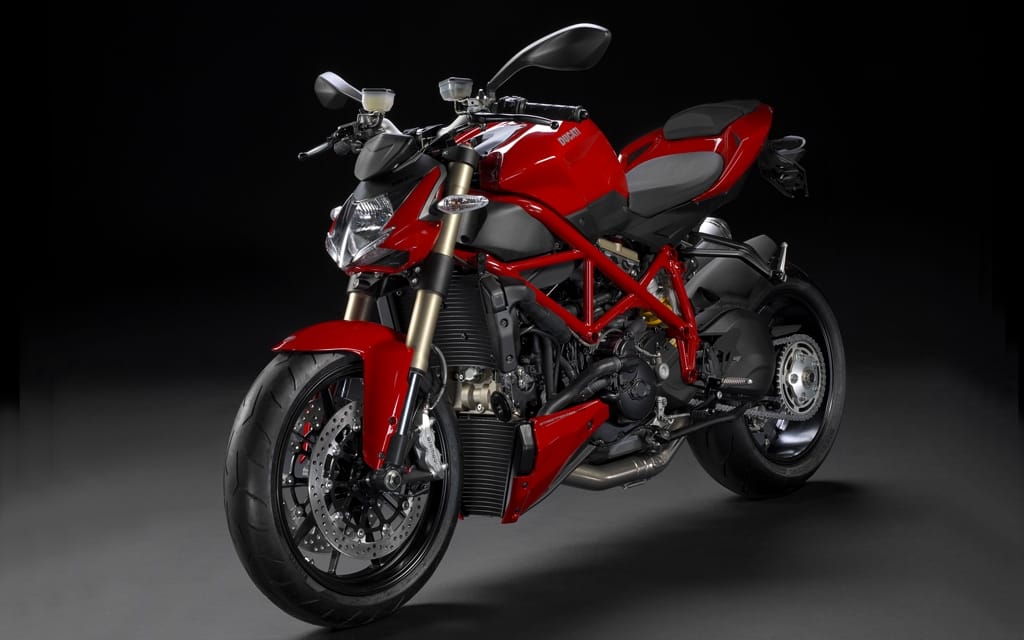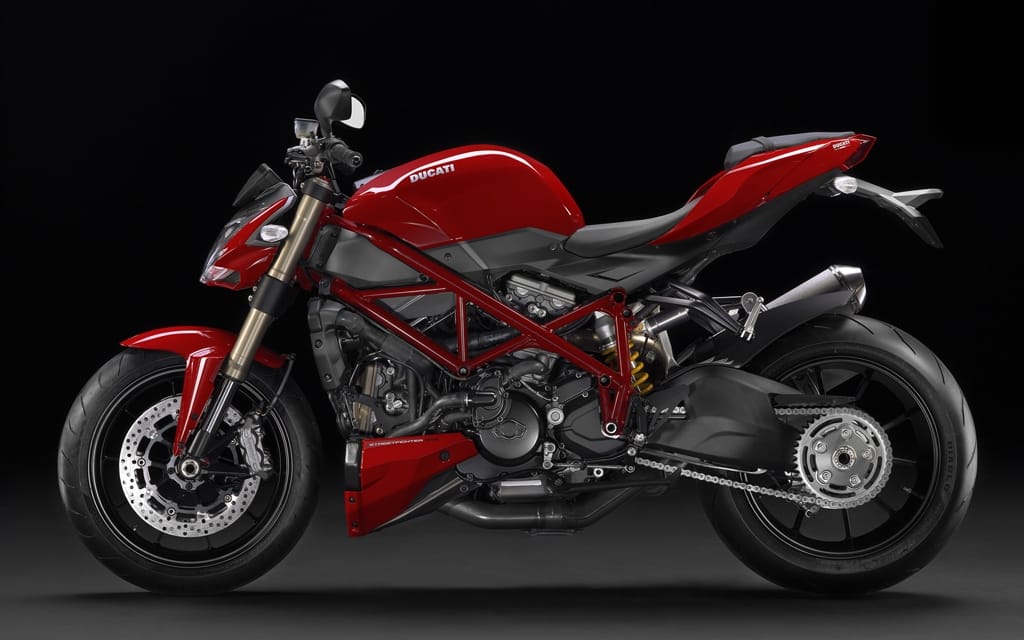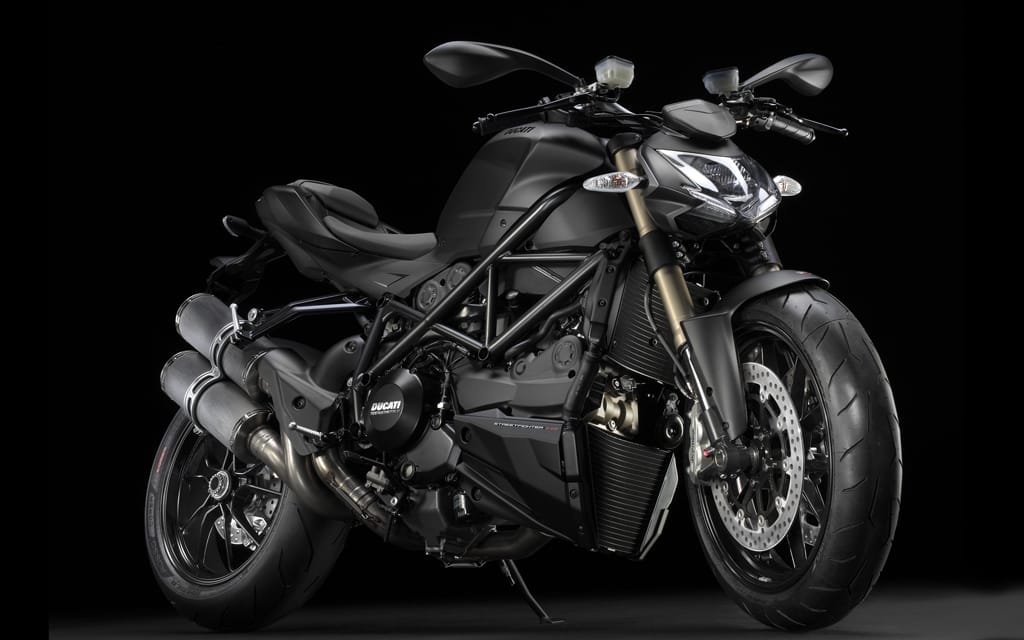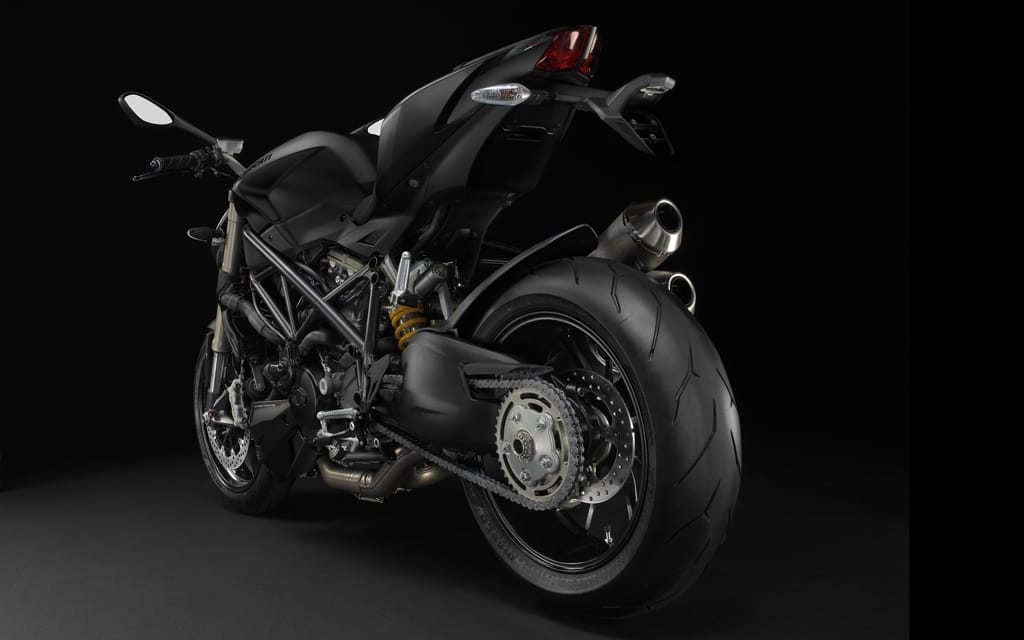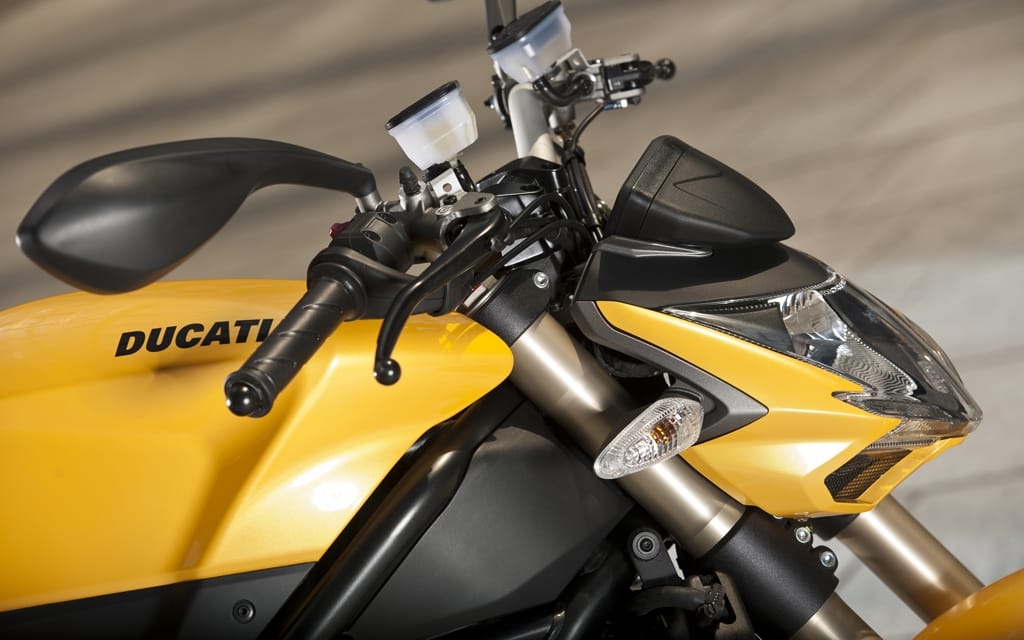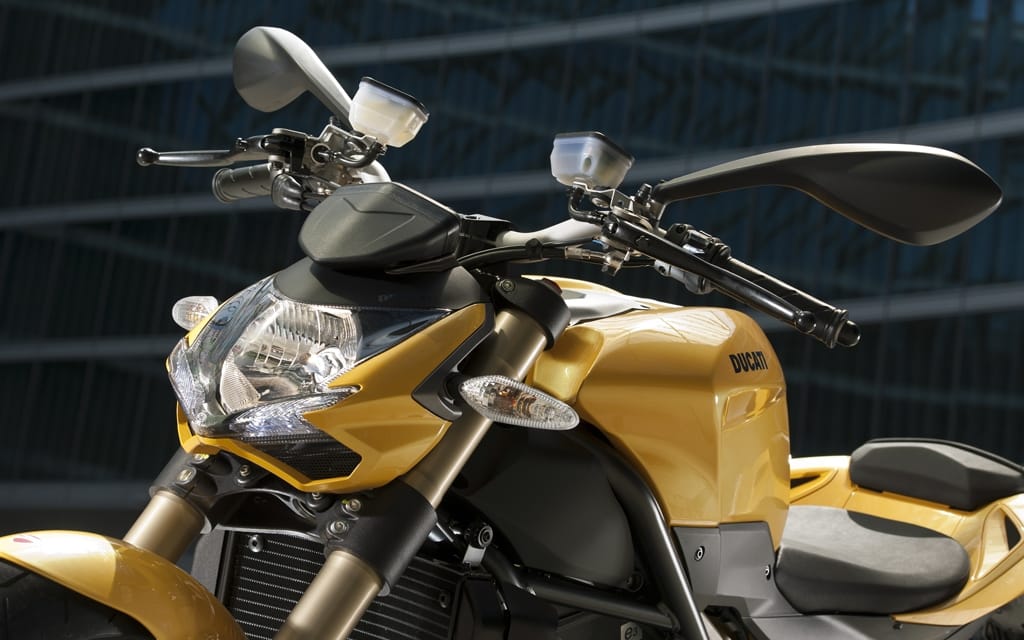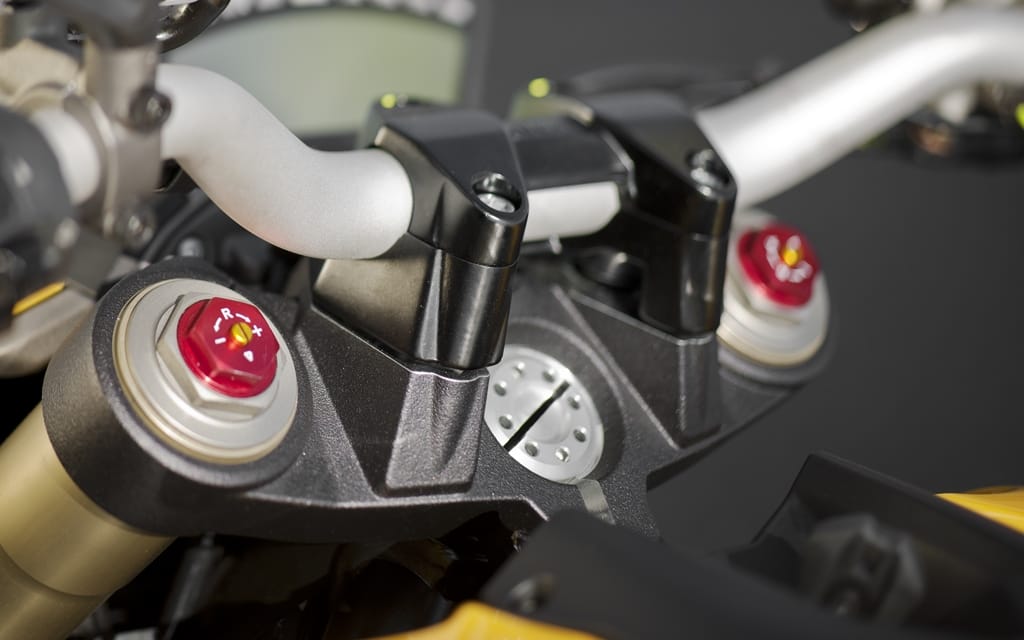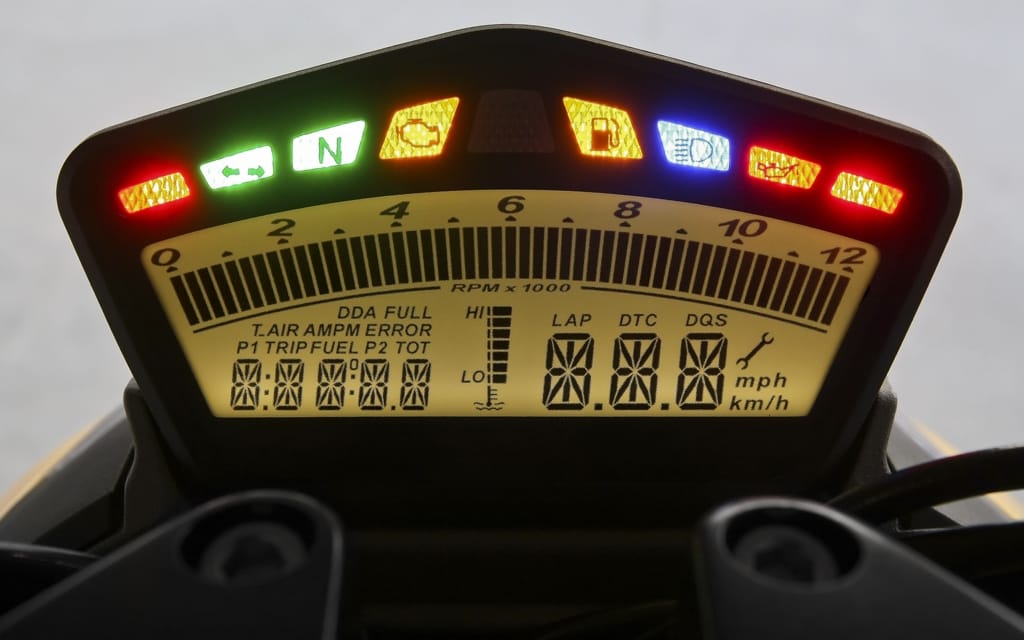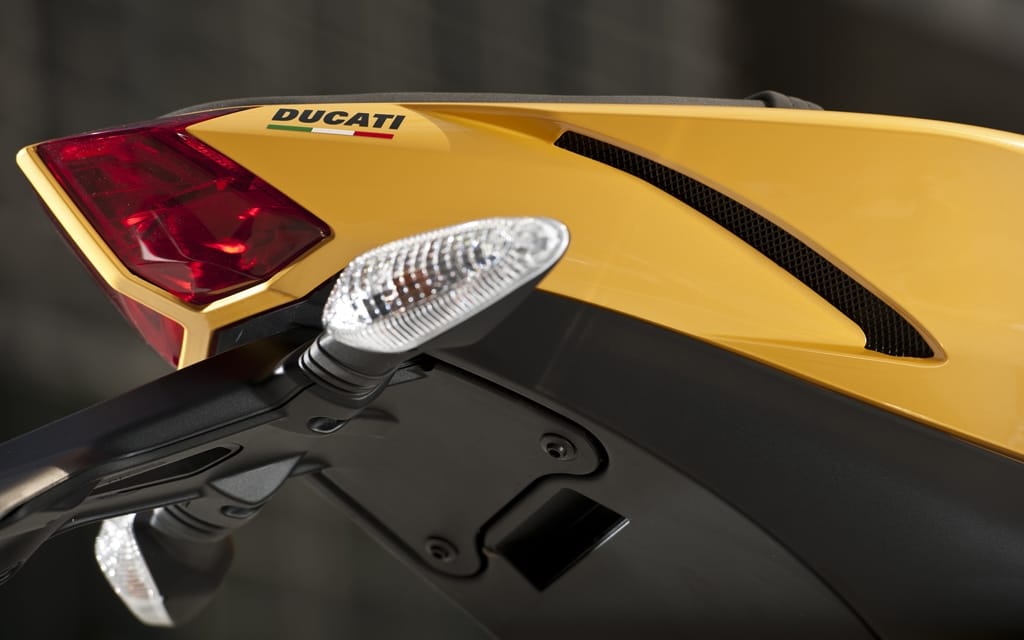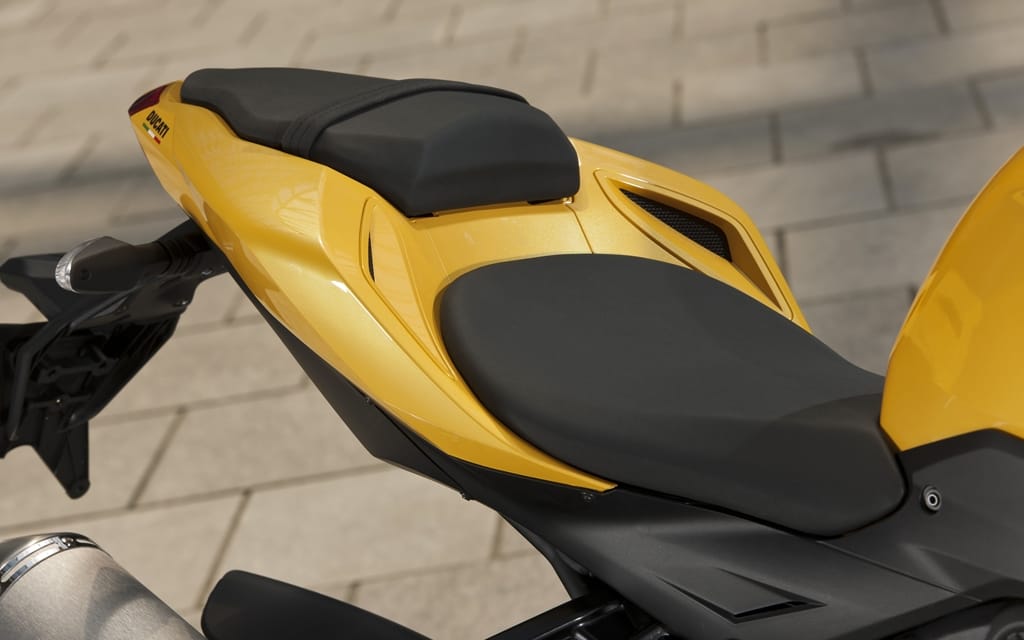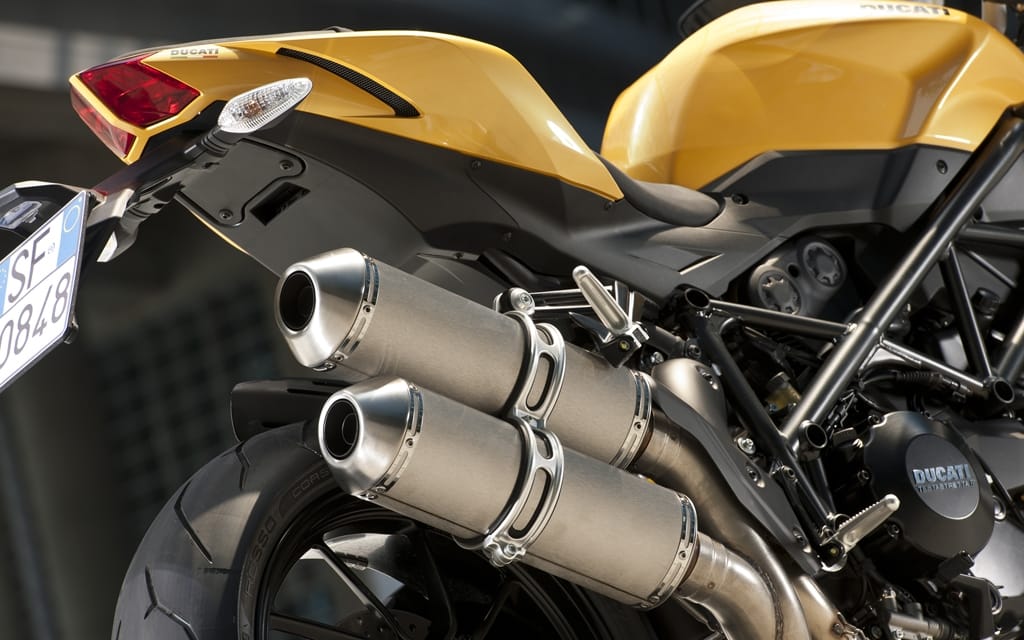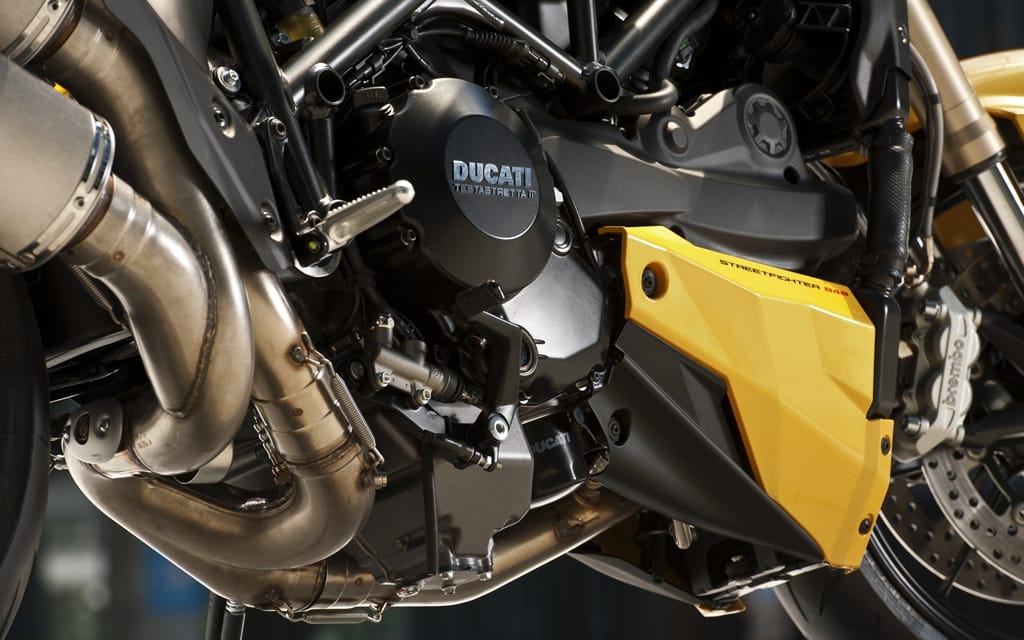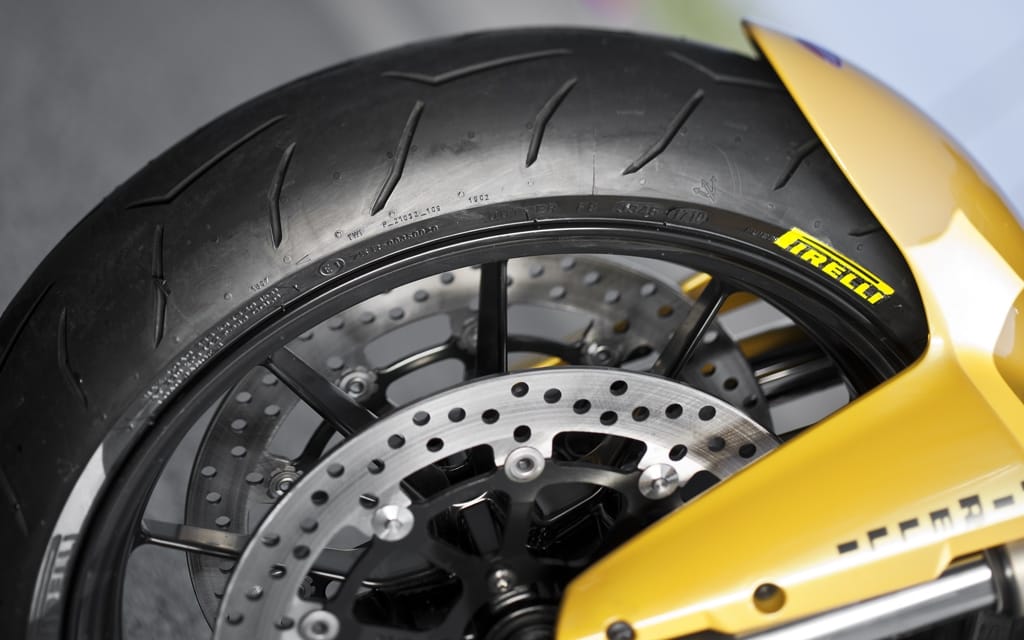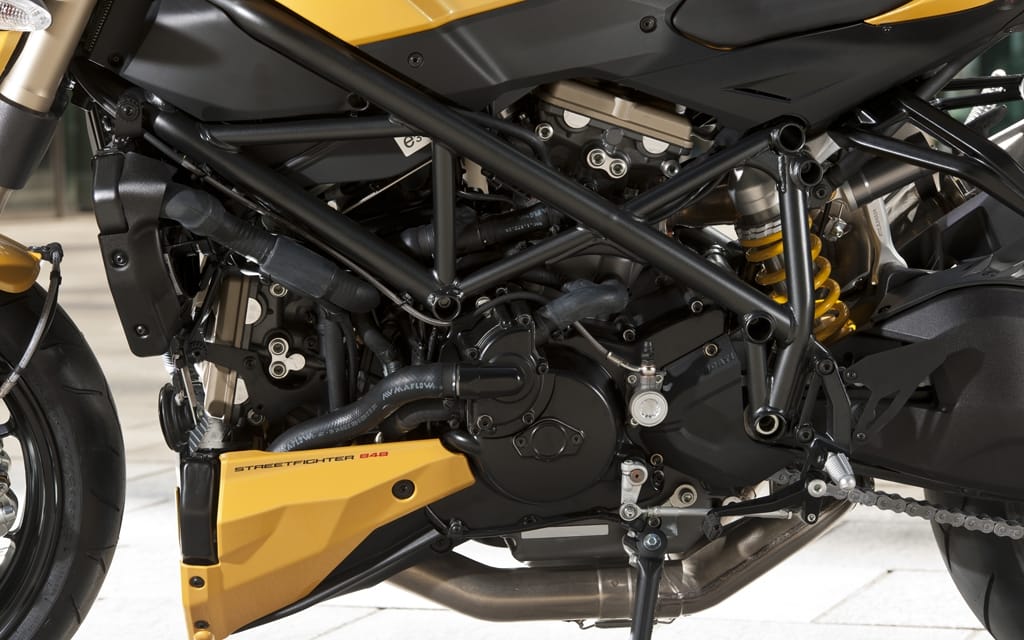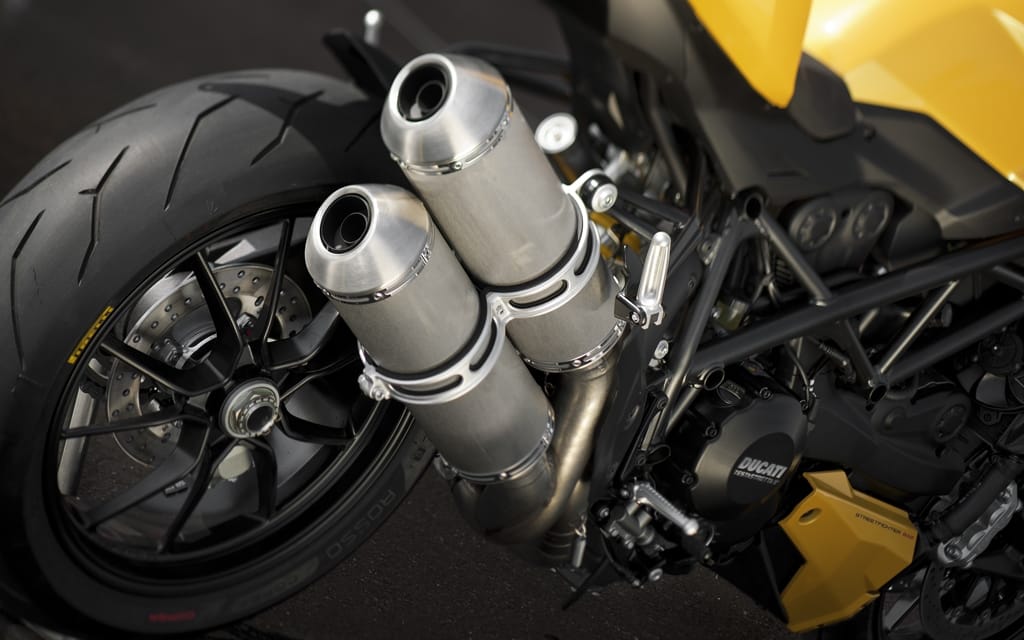The original 1,098 cc Streetfighter is a ferocious beast. For the Streetfighter 848, Ducati tries a different approach.
An hour into our ride on the Streetfighter 848 we stop at a quaint roadside café nestled into the Apennine Mountains south of Modena, Italy. There are eight of us in our group: five Californian journos, two Ducati guides, and me. I order an espresso, my third of the morning. I’m hoping an overdose of caffeine will dissolve the jetlag enveloping my body. We’ve ridden a demanding stretch of road at a spirited pace and I don’t want to lose my edge for the trek back down the mountain. Fatigue is not an option. Standing on the café’s terrace, I shoot my espresso back and then take in the undulating hills of the surrounding countryside. Minutes later our gang of bumblebee-coloured Streetfighters is back on the road descending into the Po Valley.
Ducati claims the Streetfighter 848 (in red, black, or yellow for $13,995 beginning in February) is a machine for experienced “36-year-old non-sport-bike riders used to high performance motorcycles.” This, apparently, in response to fans of the Streetfighter design concept (all, presumably, 36 years of age) who considered the original 1,098 cc model too hard-edged.
Derived from Ducati’s 848 superbike V-twin, the Streetfighter mill claims 132 crankshaft horsepower, down eight from the superbike. Just as Ducati reduced the valve overlap from 37 to 11 degrees in adapting the 1,198 cc superbike engine for use in the Multistrada and Diavel, so too did they adapt the 848 engine. The goal is a sweeter, more tractable engine at the cost of high rpm power. Ducati then cradled their mellowed engine in a superbike-derived trellis frame that reduced the 25.6 degree rake and 114 mm trail of the 1,098 cc Streetfighter to 24.5 degrees and 103 mm, respectively.
According to Ducati, the revised chassis geometry allows greater agility and improved front-end feel to the junior Streetfighter, and our ride through the Apennines backs up the claim. The 1,098 cc Streetfighter demanded a strong hand to tame it. Not so for the 848. Careening through the Apennines on the new bike is not the laborious chore I’d feared, even though it (surprisingly) weighs the same 198 kg wet as the big bike. Instead the new Streetfighter’s nimble handling, easy steering, and confidence inspiring feedback allow me to keep up with the fast-riding So-Cal dudes at the head of the line, three of whom consistently ride wheelies in formation when we encounter the few straight bits of road.
I briefly consider joining in on the stunting antics, but think better of it. This is my first motorcycle press launch, after all, and I should really focus on getting through it without mishap. No such luck. Minutes after we begin the journey back down to Modena (and amped up on espresso) I trail-brake late into a 90-degree left-hander and find myself about to plow into the Californian directly in front of me. I pull even harder on the brake to avert collision and the Streetfighter’s front suspension pogo hops the machine furiously across the pavement and into the weeds. To make matters worse, the weeds are growing between rocks protruding from the sheer hillside that rises up immediately from the edge of the road (in retrospect, it’s a blessing that the cliff goes up instead of down). There isn’t anywhere to go, and the Streetfighter and I violently plow a path through the scree at the bottom of the hill, my right knee scraping the cliff wall. Though I’m spread-eagled on the tank and tossed around like a bronco rider, I wrangle the Ducati to a safe stop.
I jump off to extricate the motorcycle from the hillside before the last two riders in our group catch up and witness my folly. But they’re only a few seconds behind and both stop and help me pull the bike back onto pavement and yank the weeds from the undercarriage. A quick inspection shows no real damage to the bike, only a few tiny scratches on the end of its brake lever. Instead, it’s my right knee that’s taken the brunt of the incident. The right pantleg of my Draggin’ Jeans is torn, but, fortunately, only the denim outer layer. The protective Kevlar knee patch beneath is still intact and I come away from my excursion with only a minor burn-like abrasion.
Earlier, at the café, a number of us had commented that our test bikes’ suspension had been set too softly for our lively mountain ride. We had all experienced rear-end wallow in turns with uneven pavement. My near get-off was the result of too soft suspension, and, as always, operator error. Unlike the big Streetfighter, which has Showa suspension components, (same as on the superbike 848), the Streetfighter 848 is suspended by the same lower-spec 43 mm Marzocchi fork and Sachs shock as found on the Monster 1100. But all is not lost—with adjustability for spring preload as well as compression and rebound damping, my suspension issues could be resolved by more precise suspension tuning.
Pottering through villages and negotiating hairpin turns on the way back to Modena, the bike is as smooth and easygoing at low speeds as it is on the boil, unusual for the notoriously tall-geared Ducatis. While the big Streetfighter uses a 38-tooth rear sprocket, and the superbike 848 a 39, Ducati fitted a 42-tooth sprocket to the Streetfighter 848’s rear wheel. The larger sprocket may compromise top-end speed, but it certainly helps to make the Streetfighter user-friendly at all other speeds. Though Ducati throughout its history has often been ambivalent about rider comfort, the handlebar is 20 mm higher than the big Streetfighter’s for a more upright posture. Unfortunately, the seat is steeply angled into the gas tank and testicular discomfort is ensured, although I only noticed it on the less engaging parts of our journey.
The Streetfighter 848’s brakes are less ferocious than those on the big Streetfighter (Brembo monobloc calipers have been swapped-out for standard Brembo units). What is surprising is the lack of ABS, even as an option. A German journalist I speak to during lunch is convinced that this will be a deal-breaker for German riders, 36 years old or otherwise, and wonders how North Americans will respond to the lack of ABS. I tell him that I can’t speak for a continent with three massive countries, but the oversight is questionable.
ABS or not, the brakes are more than adequate during our afternoon sessions at Autodromo Modena, a new two-kilometre track of primarily second-gear turns. A sharp right-hander at the end of the straight finds me cautious about getting hard on the brakes again after my morning’s misadventure. But our afternoon Streetfighters have been set up for the track. The bike’s suspension is now very firm, providing rock solid stability in all of the Autodromo’s 11 turns – no pogoing – and the confidence I’d lost out on the street is regained. Eight-level Ducati Traction Control (DTC) is standard on the Streetfighter 848. Position eight has the greatest level of intervention and position one the least. Earlier, during our road trip, one of the riders in our group pulled over because his bike’s traction control was constantly kicking in and restricting him from riding as aggressively as the rest of us. The machine’s previous rider had apparently set the DTC to eight. Mine, on the other hand, had been turned off, as I learned upon checking at the end of the ride. For the track, all bikes have been set to level three, and I insist on a visual confirmation from the technician assigned to my machine.
I never consciously feel the DTC intervening during either of my track sessions, and the circuit’s abundance of tight turns makes it difficult to take my eyes off the track and watch the dash lights for the telltale sign that traction control is employed. Late in my final session, I accelerate hard exiting a corner while still leaned over. The tire slides then abruptly hooks up and jolts the bike up straight. Perhaps I was leaned over too far for the DTC to be able to help. Traction control, as former World Superbike champion Troy Corser once told our editor, is not necessarily high-side control.
As I accelerate up the Autodromo’s straight, I certainly don’t feel the arms-pulled-from-the-sockets jolt of a litrebike, but the front wheel gently lofts off the ground before settling down again. For most of the turns, I leave the bike in second gear, where it’s happy to chug through slow sections and scream through the faster bits. I never hit top gear on the short straightaway, but eventually see over 190 km/h in fifth. The Streetfighter 848 may not be a hard-edged sportbike, but don’t be lulled into thinking it’s a mild-mannered commuter.
Between sessions I stand with my group in the trackside garage (drinking Gatorade now instead of espresso) and notice the mechanics installing fresh tires. The road and track Pirelli Diablo Rosso Corsas—standard rubber on the Streetfighter—have only 20 laps on them and yet they’re already being changed. “Can you believe they’re giving us new tires for the next session?” I say to one of the Californians. He chuckles. “It’s as if they think we’re a bunch of World Superbike riders.” If he only knew. This is only my second time on a track, and the fact that I’ve been able to jump on the Streetfighter 848 and not completely embarrass myself (excepting my road incident, of course) among a group of very experienced riders speaks to the Ducati’s willing yet supple nature—even for a long-past 36-years-old thrasher like me.
